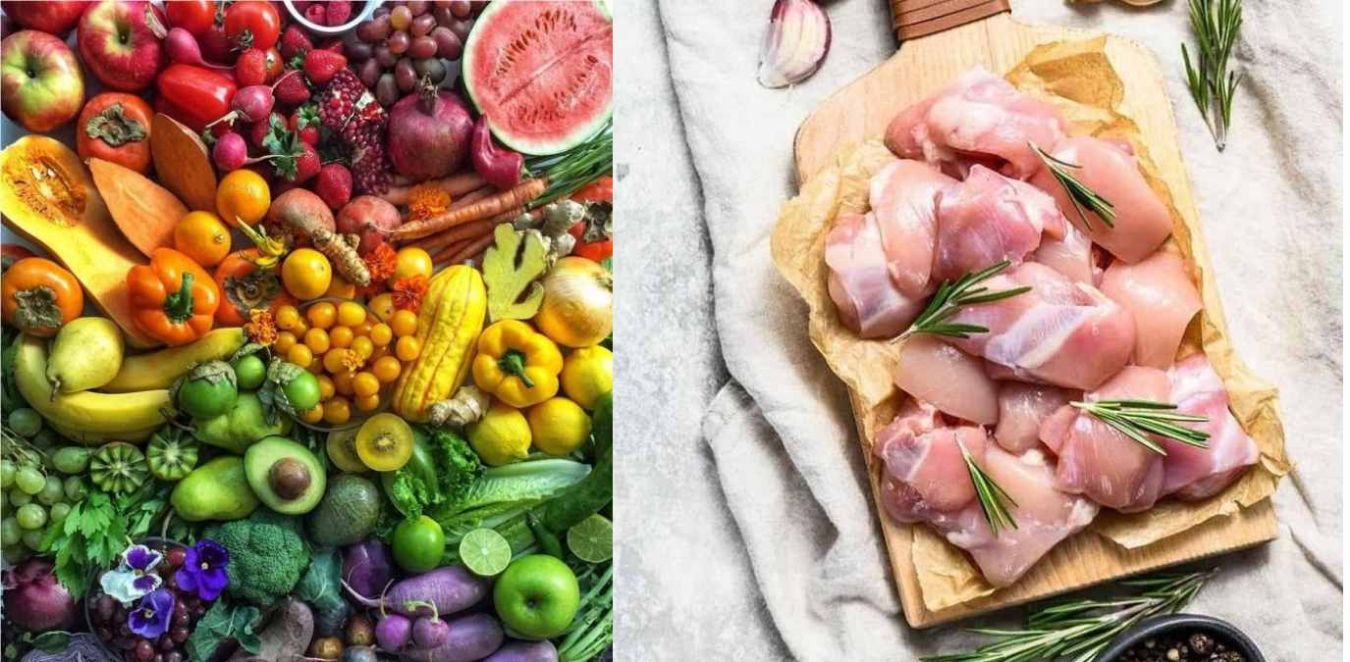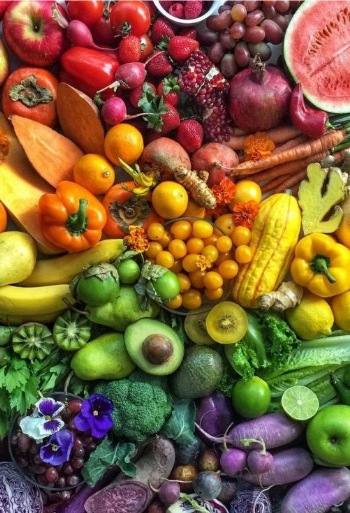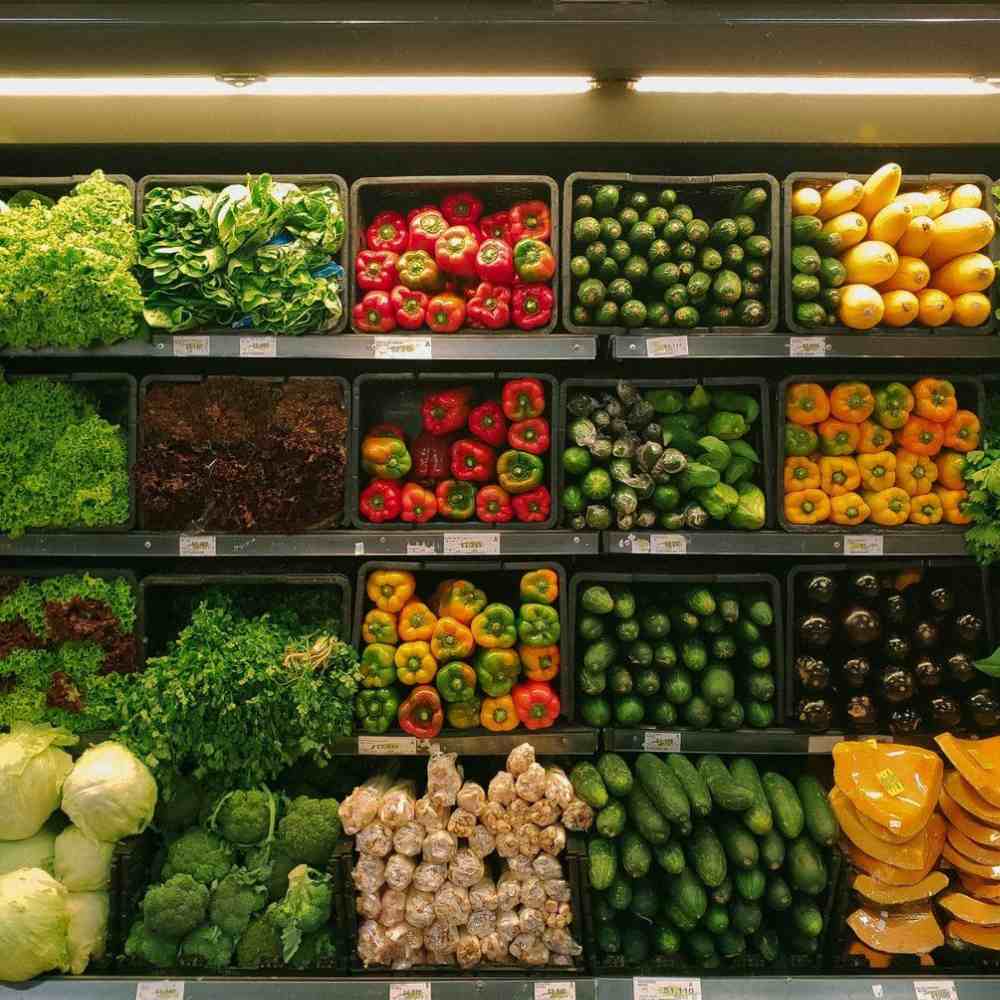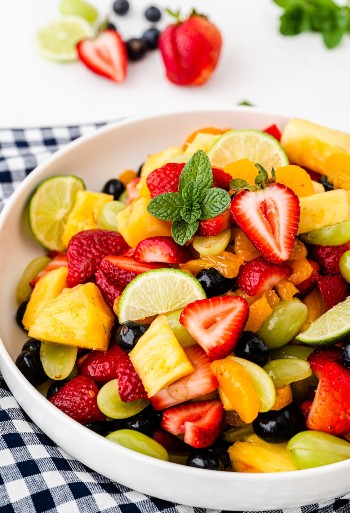It is important to include fresh eggs, meat, fruits, and vegetables in your daily diet. In addition to being naturally healthy, they contain vitamins, fiber, proteins, and minerals that are beneficial to your health. Additionally, they can prevent some illnesses.
In addition to eating a balanced, regular diet and living an active lifestyle, most Indians will benefit from consuming more eggs, meat, fruits, and vegetables. A wide variety of fresh meat, eggs, fruits, and vegetables are available, and there are many ways to prepare, cook, and serve them.
You should eat at least five servings of vegetables and two servings of fruit every day. Make sure you eat a variety of colors and varieties.
The serving size of vegetables is one cup raw salad vegetables or 1/2 cup cooked.
One serving of fruit is 1 medium, 2 small pieces, and 1 cup canned (no sugar added).
What Are Fresh Foods?
"Fresh" refers to the state of the food in its raw state and has not been frozen, thermally processed, or preserved in any way.
The term is sometimes used on labels of foods to indicate that the foods are unprocessed and not dehydrated.
Types Of Fresh Food
- Meat
- Poultry
- Seafood
- Eggs
- Vegetables
- Fruits
Fresh Meat Near Me

Image source : Pinterest
The term fresh meat refers to meat that has not been preserved in any way other than chilling, freezing, or quick-freezing, including vacuum-wrapped or wrapped in a controlled environment.
Fresh Poultry Near Me
Fresh poultry means that it has never been below 26 °F (-3.3 °C), the freezing temperature for poultry. In other words, the consumer expects "fresh" poultry, not hard or frozen.
Fresh Seafood Near Me
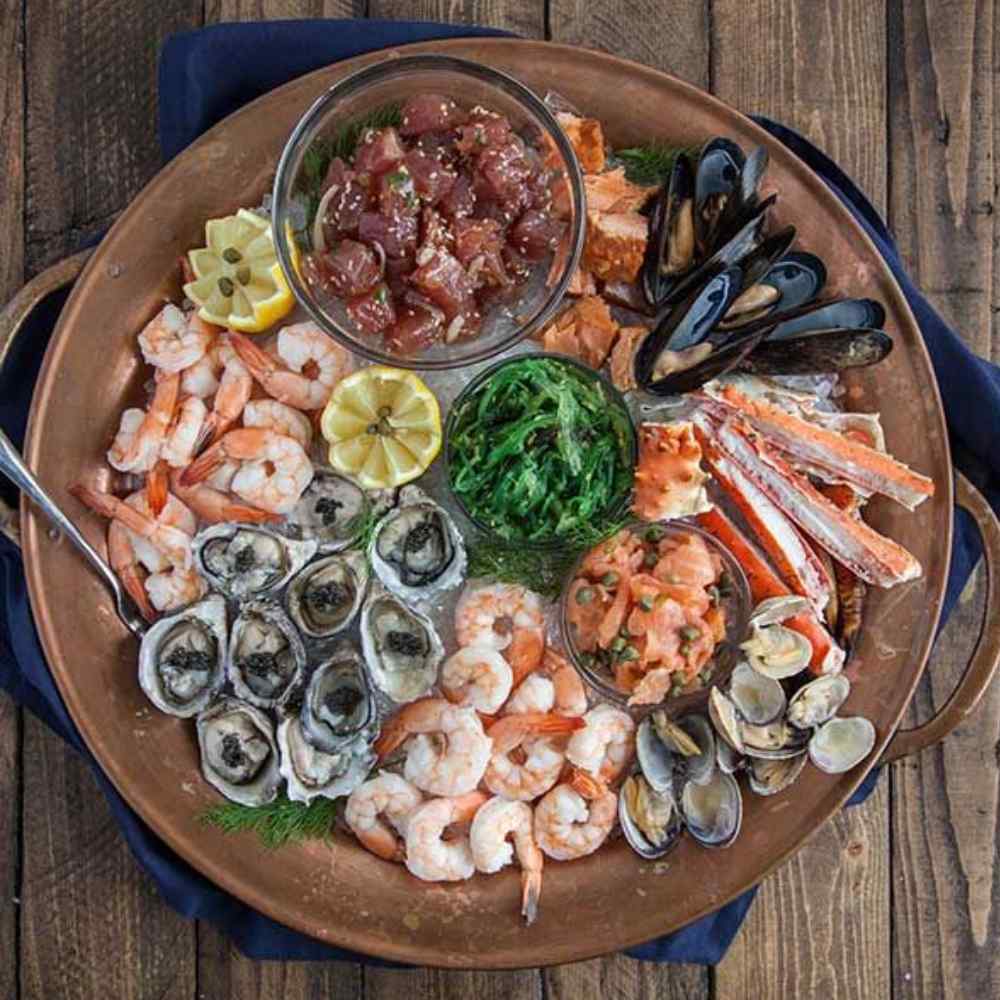
Image source : Pinterest
Seafood tastes great because some of the best flavors are embedded naturally in it. Non-frozen or stale seafood won't taste as good as fresh seafood.
It is therefore essential to consume it fresh as the flavor and natural taste only last a few days.
Fresh Eggs Near Me
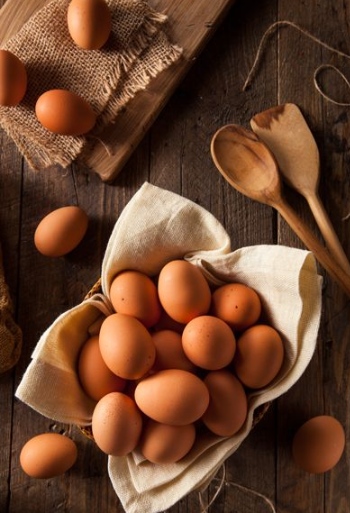
Image source : Pinterest
Fresh eggs are known for their rich, vibrant yolks and firm, clear whites. They have this appearance because specific feed ingredients affect their appearance.
Fresh Vegetables And Fruits Near Me
Image source : Pinterest
Fresh produce is fruit and vegetable that has not been processed in any way.
This term does not include dried fruits and vegetables, potted or dried herbs, wild rice, nuts of any type, including raw nuts, popcorn, fruit or vegetable plants/seedlings, dried beans/peas, seeds/grains, flowers, maple syrup, cider, eggs, meat, cheese, and seafood.
Guidelines When Shopping For Fresh Products Near Me?
Image source : Pinterest
- Keep Cleanliness At The Top Of The List
- Check Out Milk And Dairy Products
- Be Careful When Choosing Fish And Seafood
- Check The Packages
- Check Out The Meat And Poultry
- Don't Mix Certain Foods
Fresh Produce Has Nutritional Benefits
A healthy diet should include fresh fruits and vegetables. Healthy foods are a good source of vitamins, minerals, fiber, and other nutrients.
It has been shown that a diet rich in fruits and vegetables can reduce the risk of cancer and other chronic diseases.
Key Nutrients In Fruits And Vegetables
| Nutrient | Health Benefit | Found In |
|---|---|---|
| Vitamin A | Healthy eyes and skin; protects from infection | Apricots, Cabbage, Cantaloupe, Carrots, Grapefruit, Greens, Leaf and Romaine Lettuce, Mangos, Spinach, Sweet Potatoes, Tomatoes, Watermelon |
| Vitamin C | Healthy teeth and gums; helps heal cuts and wounds | Bell Peppers, Broccoli, Brussels Sprouts, Cabbage, Cantaloupe, Cauliflower, Grapefruit, Oranges, Pineapple, Strawberries, Tomatoes |
| Calcium | Healthy teeth and bones | Greens, Kale, Okra, Rhubarb, Spinach |
| Fiber | Healthy digestive system; Reduced risk of heart disease | Apples, Bananas, Beans, Broccoli, Brussels Sprouts, Lentils, Peaches, Pears, Raspberries, Spinach |
| Folate | Wound healing; normal cell division | Asparagus, Broccoli, Peas, Beans, Greens, Spinach, Strawberries |
| Iron | Healthy blood; learning ability | Beans, Lentils, Spinach |
| Magnesium | Healthy bones | Beans, Spinach |
| Potassium | Healthy blood pressure | Bananas, Beans, Broccoli, Potatoes, Sweet Potatoes, Tomatoes |
Methods Of Extending The Shelf Life Of Fresh Produce
Various methods exist for extending the shelf life of fruits and vegetables, but there are multiple options for the majority.
There are several ways to extend shelf life, including:
- Modified atmosphere packaging and packaging improvements.
- Enhancing treatment and handling procedures.
- Analyzing cold chain weaknesses.
- Checking humidity levels.
- Covering specific items.
- Using smart stickers.
- Adopting an absorbent tray system.
- Using new types.
- Natural antimicrobial agents.
How To Serve Fruit And Vegetables For Your Family's Health
Image source : Pinterest
Fruits and vegetables are convenient snack foods that can be easily carried to work or school. For a balanced, healthy diet, add them to everyone's meals and snacks. Here are a few suggestions:
- Refrigerate snack-sized portions of fruit and vegetables.
- Leave fresh fruit on the table or bench.
- Make fruit and vegetables a part of your favorite family recipes or regular menus.
- Color and texture can add interest to your meals.
- Get creative with fruits and vegetables.
Here are some simple ways to serve fruits and vegetables:
- Salads of fruits and vegetables
- Stir fries with vegetables and meat.
- Vegetables and fruits are raw.
- Veggie soups.
- Veggie snacks, stewed or canned fruits, or dried fruits.
Fresh fruit contains more nutrients than fruit juice, so limit your intake. Fruit juice is also high in sugars. In spite of being 'natural,' these sugars may not be good for your health. Choose water and fruit instead.
How To Identify And Select Fresh Meat, Fish, Vegetables. And Fruits?
- Smell
- Texture
- Color
- Clean cuts
- Meat fat
- Examine the fish thoroughly
The Do's and Don'ts of Buying and Storing Fresh Produce
| Do's | Don'ts |
|---|---|
| 1. Do not mix raw materials with fresh foods. | 1. Be careful not to mix all the foods you purchase. |
| 2. Cleaning dimpled or tough produce like potatoes and melons requires clean scrub brushes. | 2. Unless you are planning to eat the berries later in the day, don't wash the berries. |
| 3. If you purchase from a market, make sure the dates are up to date. | 3. Milk packets and tomatoes should not be kept on the bottom of grocery shopping carts. |
What Are The Advantages And Disadvantages Of Fresh Food Near Me
| Advantages | Disadvantages |
|---|---|
| 1. Doesn't contain flavorings, preservatives, and additives. | 1. Many fresh products are seasonal. |
| 2. Retains original flavor and tastes better. | 2. Requires more preparation by a skillful cook. |
| 3. Contains more naturally occurring vitamins and minerals. | 3. Spoils easily due to water content. |
| 4. Fresh foods are cheaper and more nutritious. | 4. Needs to be stored and handled properly, or it will be contaminated. |
| 5. Contains nutrients not lost by processing. |
How To Store Fresh Products Both Inside And Outside The Refrigerator
Keep your food fresh by storing it properly! You don't need to refrigerate all produce.
The storage of fresh produce involves three different conditions. These are:
- If you do not have a heated basement, place it somewhere cool and dry at 50–60°F with 60% humidity.
- This is a moist, cold place 32 to 40°F with a humidity of 95%, such as inside a refrigerator or a root cellar.
- An unheated garage or refrigerator is a suitable, dry, and cold place with 32 to 40°F and 65% humidity.
Keeping fruit and vegetables in a refrigerator is the easiest way to keep them cool and moist. In order to prevent produce from drying out in refrigerators, store it in perforated bags or in the crisper drawer in order to increase relative humidity.
Vegetables and fruit that grow well under dry, cool conditions can often be stored in the kitchen, mudroom, or basement.
Tips To Choose For Fresh Products
1. Tips To Choose For Fresh Meat And Poultry
1. Check the odor
Meat from poultry is usually odorless, but occasionally, it may have a slight aroma. Check for an unpleasant smell or a pungent odor.
2. Prefer skinless
The meat's skin contains saturated fats which contain a high amount of calories and may increase the risk of heart disease. The skin should always be removed from the meat before consumption.
3. Know what color you need to pick.
The color of the meat suggests its freshness. For poultry, the meat should be light pink or white. You must check that the meat is not green or bruised. It must look bright red when it is red meat.
4. Ensure food safety standards
The most important step is to check food safety standards. The Food Safety and Standards Authority of India (FSSAI) must label packaged meat.
5. Check the texture
The muscle fibers must be clearly visible in poultry with a firm texture. It should not be slimy and your fingers should remain dry if you touch it. Cut meat shouldn't appear transparent or watery.
6. The source matters
To determine the quality of meat, it is important to learn how the meat is sourced and bred. Check the place or at least find out where the meat came from.
2. Tips To Choose For Fresh Fruits
1. Pears, Stone Fruit, and Apples-Inspect the surface to avoid those with bruising or dents, as these types of damage lead to rot sooner.
2. Fruits that are overripe are brown in color—yellow bananas with brown spots. Purchase green bananas if you don't plan on eating them right away.
3. Check for leaks or mold when buying blueberries, strawberries, or blackberries. It is best to buy strawberries with the leafy cap attached and without any seeds.
4. It is important to feel weighty when handling whole watermelons, cantaloupes, and honeydews. There is nothing to worry about if there is a scar on your skin; the fruit rested in that spot while on the vine.
5. Fruits such as grapefruits, oranges, and lemons should feel heavier than they appear, like melons. You should not have any yellow or white streaking on your skin.
6. Pineapple leaves should be crisp and feel heavy for their size. Turn over the pineapple and smell the bottom for one of the strongest smells of any fruit. You will notice that it smells fragrantly sweet.
7. Cherries should be plump, vibrantly colored, and free of bruises and dents. Buy only those without stems if you'll consume them immediately.
3. Tips To Choose For Fresh Vegetables Near Me
1. A bell pepper should be firm and void of soft spots. If you are buying any color of pepper, look for consistency across the entire surface and avoid any that may have split stems.
2. The color of broccoli and cauliflower is an indication of freshness. Cauliflower should be an off-white color, free of yellowing or browning, and broccoli should be a pale green color. Both should have heavy, compact heads.
3. Fresh corn husks should be pale green and moist, not brown or dried. If the husk is present, the kernels should be firm and plump to the touch.
4. A carrot, beet, potato, and onion should be hard when touched and free from cracks or soft spots. Roots should be healthy and crisp, free of wilting if still attached.
5. Assess as many layers as possible of the greens using your fingers. Kale, lettuce, and cabbage should have crisp leaves and stalks that have not wilted or browned.
6. Make sure the leaves are not torn. Although there are likely to be a few tears, avoid those that have turned brown.
8 Tips for Smart Shopping: Fruits and Veggies
1. Celebrate the season: Choose fresh fruits and vegetables that are in season. You can easily find them, they are more flavorful, and they are typically less expensive. You can find seasonal produce at your local farmers' market.
2. Why pay full price?: Look for coupons, sales, and specials that will lower your food costs in the newspaper, online, and at the store. Larger supermarkets (discount grocers if available) usually offer more for less.
3. Stick to your list: Create a grocery list ahead of time. This will help you save money. Avoid shopping while hungry. Eating after shopping will help you avoid tempting snacks. You will have more money left over for fruit and vegetables.
4. Try canned or frozen foods: Compare the price and serving size of fresh, canned, and frozen versions of the same vegetable or fruit. It may be cheaper to buy canned or frozen products. If you are buying canned items, you should choose fruit canned in 100% fruit juice and vegetables with "no salt added" or "low sodium" on the label.
5. Shop frequently for smaller amounts: Some fresh produce doesn't last long. Consume small amounts more often to avoid throwing away any food.
6. Bulk up when items are on sale: A large size bag is better for fresh fruits or vegetables you use often. In the summer, there are a lot of canned or frozen fruits and vegetables on sale, so you can buy a lot.
7. Brand names = savings: Purchase store brands whenever possible. They are cheaper than brand names. Get a membership card to save even more.
8. Simple rule: Whenever possible, buy simple produce. Processed foods, pre-cut foods, and ready-to-eat foods are convenient, but often more expensive than if they were bought in their basic forms.
Conclusion: Embracing Freshness for a Healthier Lifestyle Near Me
A variety of fruits, meats, poultry, and vegetables contain vitamins, minerals, and plant chemicals. They are also high in fiber.
It is possible to cook, prepare, and serve many kinds of fruit and vegetables.
Fruits and vegetables are powerful antioxidants and may reduce your risk of cancer, diabetes, and heart disease.
For good health, eat five kinds of vegetables and two kinds of fruit each day.
To get the most nutrients and to make your food more appealing, choose a variety of fruit and vegetables.





